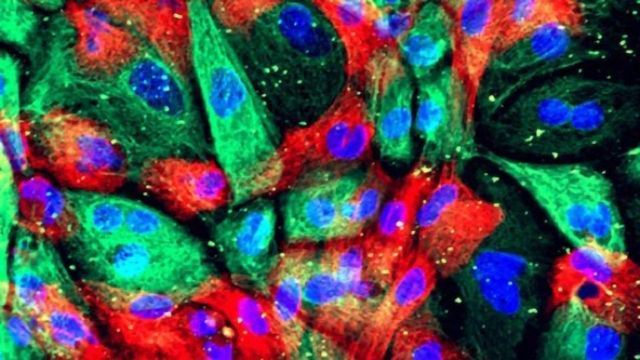Trending News
News

News
More “Risk” Genes Added to the List for Alcohol Use and Abuse
A genome-wide association study has identified five new genetic risk loci that can pass on risk for harmful alcohol use from parents to children, and confirmed one previously identified risk locus.

News
Telling Addicts They Have a Disease May Be Counterproductive
Research finds that people with substance-use problems who read a message describing addiction as a disease are less likely to report wanting to engage in effective therapies, compared to those who read a message that addiction behaviors are subject to change.

News
How Fish Struggle With Environmental Hazards
Researchers are studying the effects of environmental toxins and elevated water temperatures on fish fertilization, as well as the role of microplastics in the food chain of fish.

News
Prostate Cancer Cells Mimic Bone-forming Cells When They Metastasize
Prostate cancer cells develop the ability to mimic bone-forming cells called osteoblasts, enabling them to proliferate in the bone microenvironment –researchers describe how in a new study.

News
First Large-scale Genetic Analysis of the Human Plasma Lipid Species
Understanding the genetics of lipid species offers information beyond that provided by routine lipid screening, and can help improve risk prediction and treatment. In the first large-scale study, novel lipid-associated genetic variants were identified, some of which were linked with risk for cardiovascular disease, such as heart attacks and strokes.

News
Cancer Cells: Quick-change Artists Adjusting to Their Environment
Scientists now show that cancer cells of glioblastomas – conspicuously aggressive solid brain tumors – manifest developmental plasticity and their phenotypic characteristics are less constrained than previously believed.

News
Whole Grain Consumption Linked to Gut Serotonin Levels
Adults consuming whole grain rye have lower plasma serotonin levels than people eating low-fibre wheat bread, which may be linked to the wider health benefits of whole grains.

News
Monkey-infecting Virus May Be Part of Future HIV Vaccine
A protein from Simian Immunodeficiency Virus (SIV), which can infect monkeys and apes and cause an AIDS-like disease in the natural host, has shown promise as a potential component of a vaccine against HIV.

News
How Inhibitory Neurons Impact Brain Oscillations
Researchers have used a combination of two computer models to study the ways that different kinds of neurons synchronize, and to delve into the oscillatory patterns that are produced by that synchronization.

News
Virus's Coat of Deadly Armor
Viruses interact with proteins in the biological fluids of their host resulting in a layer of proteins on the viral surface. This makes the virus more infectious and facilitates the formation of plaques characteristic of neurodegenerative diseases such as Alzheimer's disease.
Advertisement






